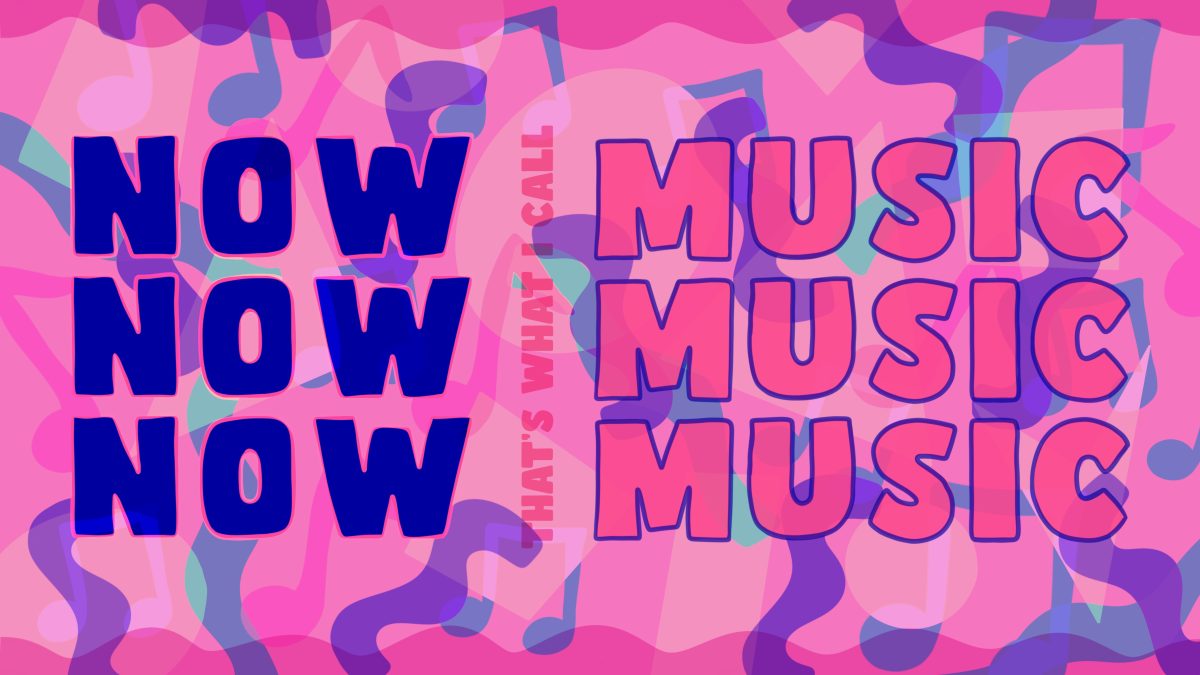If you were anything like me as a child, you vividly remember the Now! compilation albums. I can recall hours upon hours spent listening to these albums, which would be playing from the pink flowery CD player which sat proudly upon my desk. A huge amount of time would be spent singing along to the radio edits of songs such as Katy Perry’s ‘Firework’, Cee Lo Green’s ‘Forget You’, and Taio Cruz’s ‘Dynamite’, to name just a few. It was always a treat to receive the newest Now! album for Christmas, which would never fail to encapsulate the pop scene of the time through an eclectic mix of the biggest releases from the last few months. Looking back at the tracklists today is like looking into a time capsule. Now! is a brand which has endured the test of time, still going strong today after more than 100 numbered album releases since its inception in 1983. Spin-offs and other Now! series such as Now Dance and Now Decades take the total number of releases past 250. Their success can be contextualised by considering the musical landscape of the time and the potential to exploit a gap in the album market.
In 1983, compilation albums existed, but they were often seen as tacky. They were cheap and nasty, with songs which had been messily put together to create disarrayed and generally poor albums. This all changed when Stephen Navin and Jon Webster at Virgin Records, the top selling singles label in the UK at the time, had an idea. Companies were repeatedly asking Virgin to buy tracks to use in their compilation albums, and Navin and Webster realised how lucrative it could be to simply create their own compilation albums instead. Virgin spoke to EMI about this to see if they would get involved, as EMI were a larger and older establishment which could help out with getting big bands on board. Together, they resolved to create a brand which would give music lovers compilation albums which they could genuinely enjoy listening to. They were much more elegantly compiled and were made to look very different to other compilation albums, with sleeker packaging which contrasted with the basic black and white or black and red sleeves which were seen with previously existing compilation albums. From the beginning, the product was presented as a more luxurious product, evoking excitement in the general public.
The name Now That’s What I Call Music! came from a 1930s poster for Danish Bacon which was hung in the office of Simon Draper, Navin and Webster’s boss. It was bought for Draper by Richard Branson, Draper’s cousin, and depicted a pig listening to a hen singing, with the caption “Now that’s what I call music”. The poster was a joke, referring to Draper’s early morning irritability – Branson said that he was “notoriously grumpy before breakfast”. On seeing this poster, Navin decided that the phrase said exactly what they wanted to say and so the name was chosen.
The first album was released on 28 November 1983, compiling 30 UK hit singles from that year by artists such as Phil Collins, Duran Duran, and Rod Stewart. The album went straight to number one, selling 1.1 million copies. Webster has said that it was difficult to convince some artists to get involved to begin with, due to concerns that it could affect single sales and reputations, but once the album sales took off, everyone was keen to be a part of it. David Bowie and Eurythmics refused to be on the first one, but after its triumphant release, they agreed to feature on Now 2. Three Now! albums were released in 1984, and a pattern was established. The albums were released just before every Christmas, Easter, and during the summer, just as they are today. Polygram and Universal began to contribute tracks to Now!, but other labels got involved in another new compilation brand known as Hits. This new brand was able to get big American acts involved, but Now! was known for maintaining a notable sense of Britishness. Many people seemed to like this, and Now! reached much greater success. As Draper said to the BBC in 2018, Now! “wiped out all the opposition”. Along with the numbered series, some of the spin-off albums have also reached huge success. The Now! Christmas album is the seventh best-selling album of all time in Britain, having sold four and a half million copies and outselling even Pink Floyd’s Dark Side of the Moon.
The rapid decrease in the number of people owning CD players, the rise of digital downloads and the increased popularity of streaming services have meant that sales have been gradually declining. Every Now! album released prior to 2018 received platinum or multiplatinum certification, but none of the albums released from 2019 onwards achieved this. However, it would be unfair to claim that there is not still a large amount of interest in the releases, as most of these later editions still received gold certification, meaning that over 500,000 copies were sold. However, the downward sales trajectory shows no sign of stopping, so the brand will have to evolve and adapt to changes in technology and the listening habits of the general public. I really do hope that the album series is able to continue – it is simply too iconic to lose!

